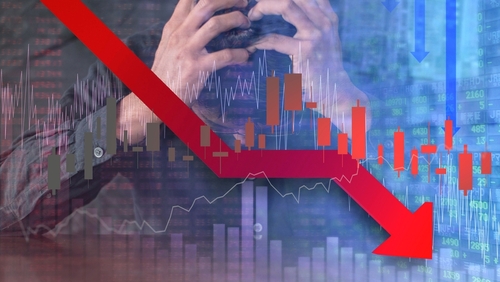
Suicide rates among young people have spiked to its “highest recorded level”, according to the findings of a research paper published in JAMA.
In the US, the Centers for Disease Control and Prevention (CDC) reported a 30% increase in suicides from 2000 to 2016 in all age groups. Adolescents are considered a particularly vulnerable age group due to their heightened use of social media, and increased rates of anxiety, depression, and self-inflicted injuries. While the CDC reported suicide rates for young people, aged 15 to 24, the researchers felt that “a more detailed analysis of the trends in this age group is needed.”
To conduct this study, the researchers combed the CDC Underlying Cause of Death database, a publicly available data set based on death certificates and population estimates from the US Census Bureau. They discerned suicide rates from 2000 to 2017 using the International Statistical Classification of Diseases and Related Health Problems, Tenth Revision codes (X60-X84). The population of interest were teens, aged 15 to 19 years old, and young adults, ages 20 to 24. Both males and females were analyzed, separately, and collectively, and different time points at which suicide trends changed were defined as annual percentage change (APC).
Profoundly disturbing data in @JAMA_current about an increase in youth #suicide rates. Our elected officials are not adequately addressing this. If they don't care about young people taking their own lives, we should ask, what do they care about?https://t.co/qEtbRc5uVD
— Joshua Rubin (@Medicaidgeek) June 18, 2019
Adolescent Males Most Vulnerable
The findings of their analysis show that among the 15-19 teen population, the suicide rate in 2000 was only 8 per 100,000, with no notable deviation in trend leading up to 2007 (APC, 3.1% from 2000 to 2007 (APC, −1.7% [95% CI, −3.6% to 0.3%]). However, the results suggest a growing trend from 2007 to 2014 (APC, 3.1% [95% CI, 0.5%-5.7%]), and subsequently, a spiking trend from 2014 to 2017 (APC, 10.0% [95% CI, 4.3%-16.0%]).
Separated by gender, males, exhibited a decreasing trend from 2000 to 2007 (APC, −2.2% [95% CI, −3.6% to −0.7%]), and a growing trend from 2007 to 2015 (APC, 2.6% [95% CI, 1.2%-4.0%]), as well as an increasing trend from 2015 to 2017 (APC, 14.2% [95% CI, 2.9%-26.7%]). Conversely, females displayed no trend from 2000 to 2010 (APC, 1.8% [95% CI, −0.9% to 4.6%]) and an increasing trend from 2010 to 2017 (APC, 8.2% [95% CI, 5.0%-11.5%).
Moreover, among the young adult age group, the suicide rate for males and females combined in 2017 was 17 per 100 000; partitioned out, among males, 27.1 per 100 000; and in females, 6.2 per 100 000. The rate in 2000 was 12.5 per 100 000, with an increasing trend from 2000 to 2013 of 1.1% APC (95% CI, 0.7%-1.4%) and from 2013 to 2017 of 5.6% APC (95% CI, 3.6%-7.6%). In males, there was an increasing trend in APC from 2000 to 2013 of 0.5% (95% CI, 0.1%-0.9%), followed by an increased trend from 2013 to 2017 of 5.5% (95% CI, 3.4%-7.7%). Furthermore, in females, there was an increasing trend in APC from 2000 to 2017 of 4.0% (95% CI, 3.6%-4.5%).
“Our new information shows that suicide among adolescents has reached its highest recorded level, and it shows that there’s especially an increase in recent years in adolescent males,” said Oren Miron, a research associate at Harvard Medical School in CNN published article. “The data shows that it is a very real threat.”
The researchers also noted that “future studies should examine possible contributing factors and attempt to develop prevention measures by understanding the causes for the decrease in suicides found in the late 1990s.”
New research letter in @JAMA_current on adolescent & young adult #suicides is disturbing.
"The suicide rate at ages 15 to 19 years and 20 to 24 years increased in 2017 to its highest point since 2000."
We just aren't doing enough about this.https://t.co/CiAmqvs8N0 pic.twitter.com/e73Mv0PjmW
— Stephen Patrick, MD, MPH (@stephenwpatrick) June 18, 2019
Teen suicides-per JAMA . “CDC reported a 30% increase in suicides in the United States from 2000 to 2016, with rates increasing in all age groups…Adolescents are of particular concern, “ https://t.co/mN1kg3y1ej
— Joanne Kenen (@JoanneKenen) June 18, 2019







 © 2025 Mashup Media, LLC, a Formedics Property. All Rights Reserved.
© 2025 Mashup Media, LLC, a Formedics Property. All Rights Reserved.